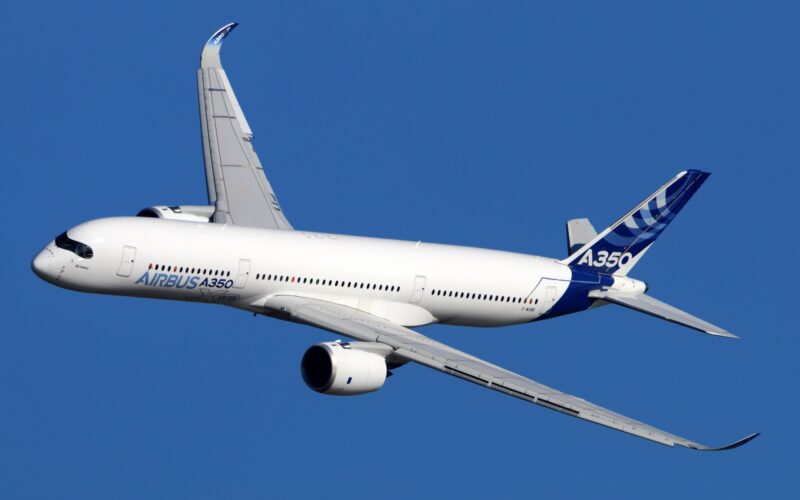The flag carrier of Switzerland SWISS has selected the Airbus A350 aircraft to replace its aging wide-body fleet of A340s.
The Zurich-based subsidiary of Lufthansa Group has recently announced it will modernize its long-haul aircraft fleet with five new Airbus A350-900 twinjets, which are supposed to join the airline from 2025 onwards. The newcomers will be delivered as a part of Lufthansa Group’s order for a total of 25 A350s, which was signed with Airbus in 2019, SWISS explained in the statement released on December 12, 2022.
“In doing so, SWISS is further underlining its endeavors to make its flight operations more sustainable, while also raising its customers’ air travel experience to new levels in all seating classes,” the airline wrote.
Configured to serve long international routes, the SWISS A350s will feature an innovative high-quality cabin interior in all seating classes as per a new Airbus production standard, which the manufacturer introduced in September 2022.
According to SWISS chief executive Dieter Vranckx, the entry of the two-engined A350-900 jet will help the air carrier to further enhance the sustainability of flight operations since it is believed to be “one of the most advanced and economical long-haul aircraft in airline service” and produces around 25% fewer emissions compared to similar older generation wide-body aircraft.
“We are very pleased to have achieved our turnaround after the coronavirus crisis and be back on a sound financial track. As a result of this, we are now in a position to invest again in the quality that we offer our traveling guests. With this planned substantial modernization of our long-haul aircraft fleet, we are setting a vital course to sustainably maintain our competitive edge over the longer term,” the SWISS CEO concluded.
According to the Planespotters.com data, the carrier currently operates a total of 86 planes, including 55 narrow-body and 31 wide-body jets.
What does the new Airbus A350-900 production standard stand for?
SWISS will receive the whole A350-900 order manufactured under the new production standard, for which Airbus has improved both the performance and the passenger cabin of the A350 family jets.
In the case of the A350-900 variant, Airbus reduced the weight by up to 1.2 tonnes compared to previous standards by optimizing systems and structures and increasing the use of advanced materials that represent over 70% of the aircraft. The manufacturer also has increased the A350 Maximum Takeoff Weight (MTW) by an additional 3 tonnes, meaning the plane can maintain its maximum range capability while carrying an increased payload.
The plane maker designed the new A350 jet with sustainability in mind, forecasting that it will become a primary concern for airlines. According to Airbus, the A350 family can deliver enhanced performance, with 25% less fuel burn and 50% less noise footprint compared to previous generation aircraft.
As for cabin improvements, the upgraded A350 aircraft features a wider interior cabin, which gives airlines the option to install 30 additional passenger seats in a typical 3-class configuration.

